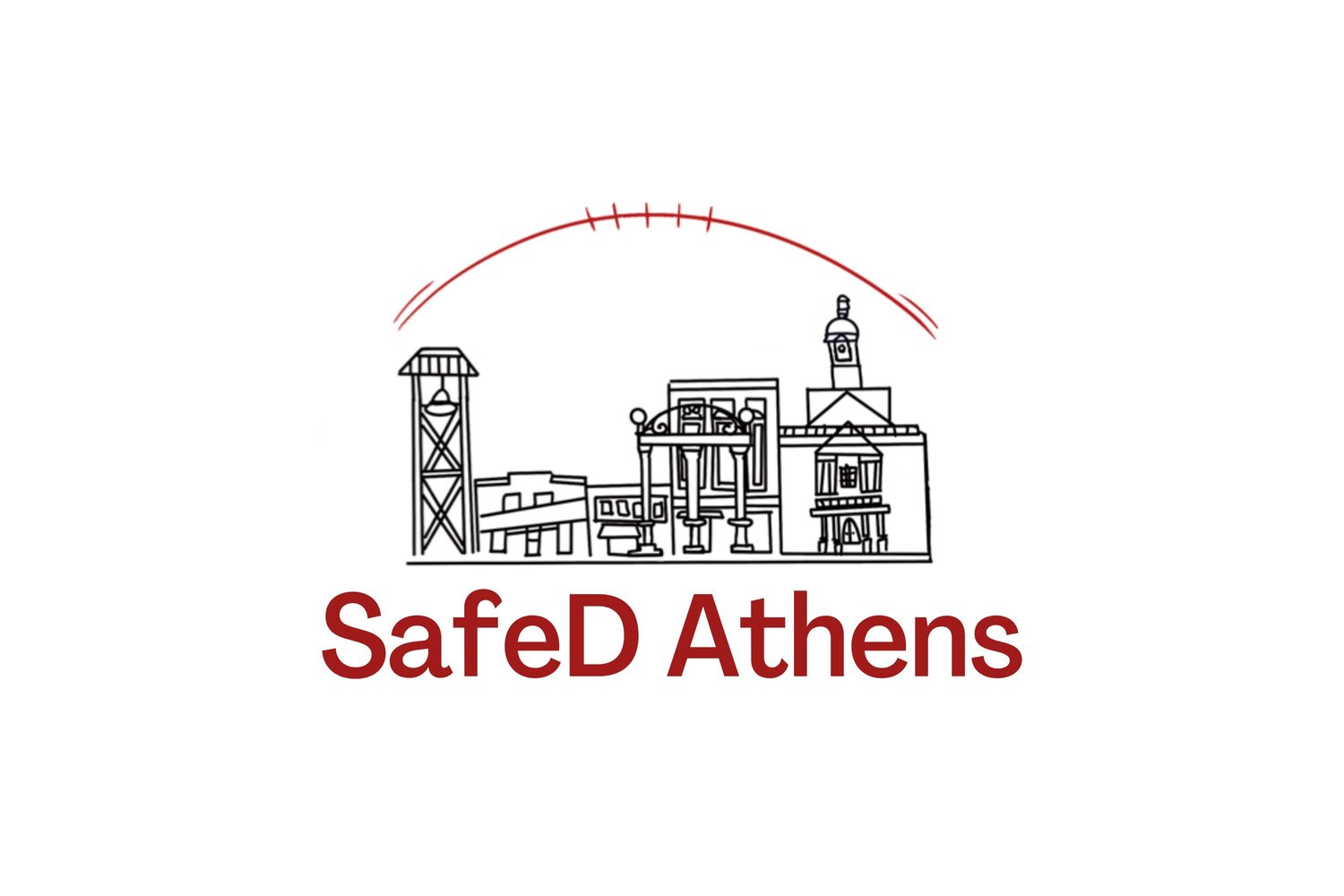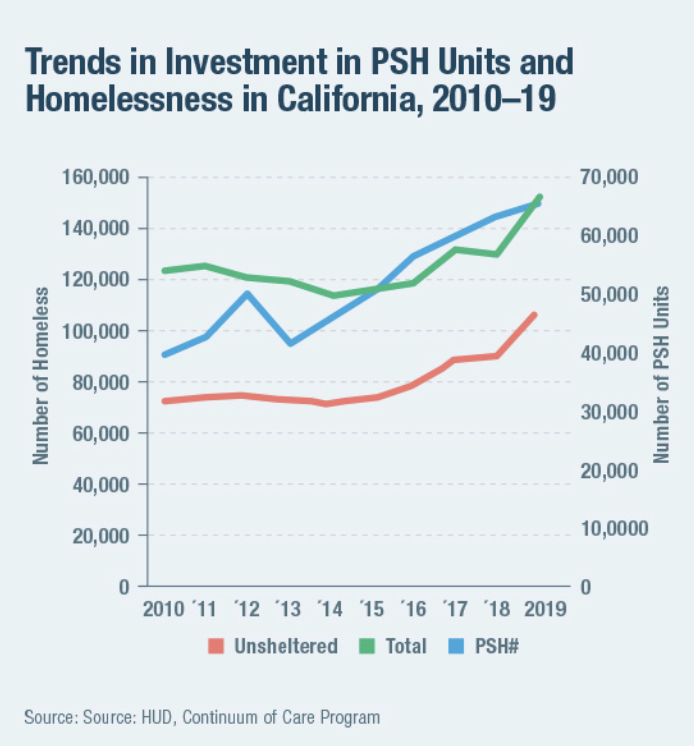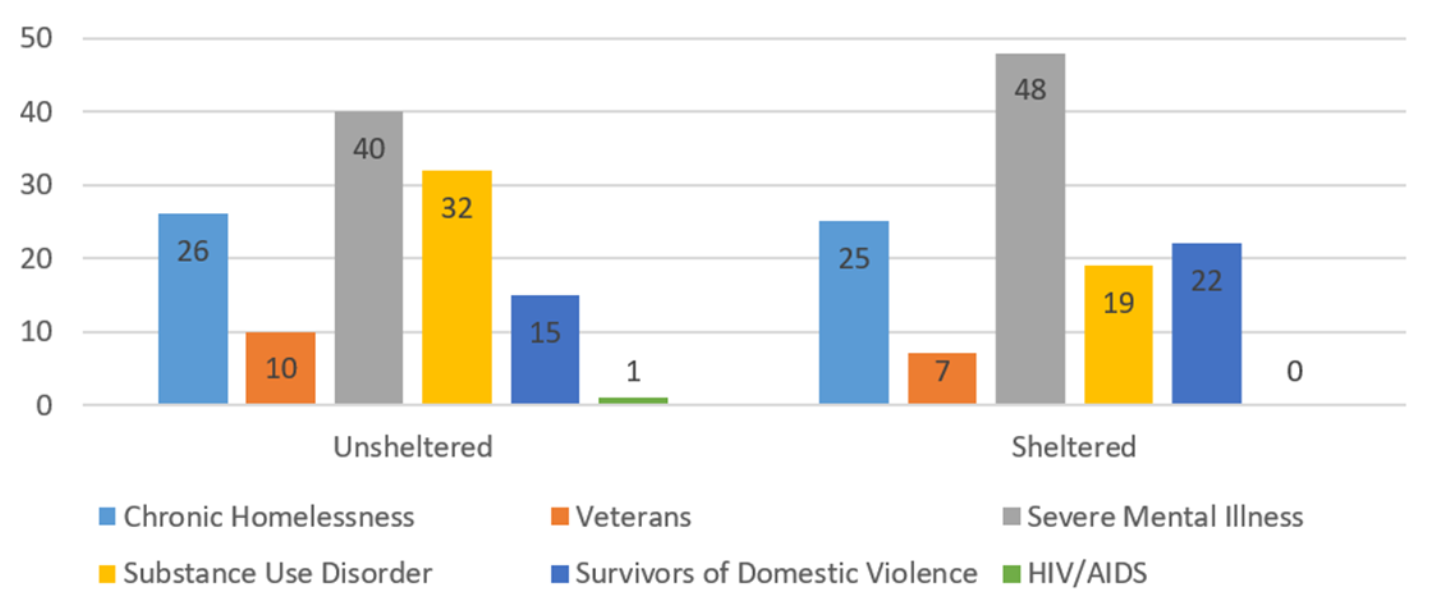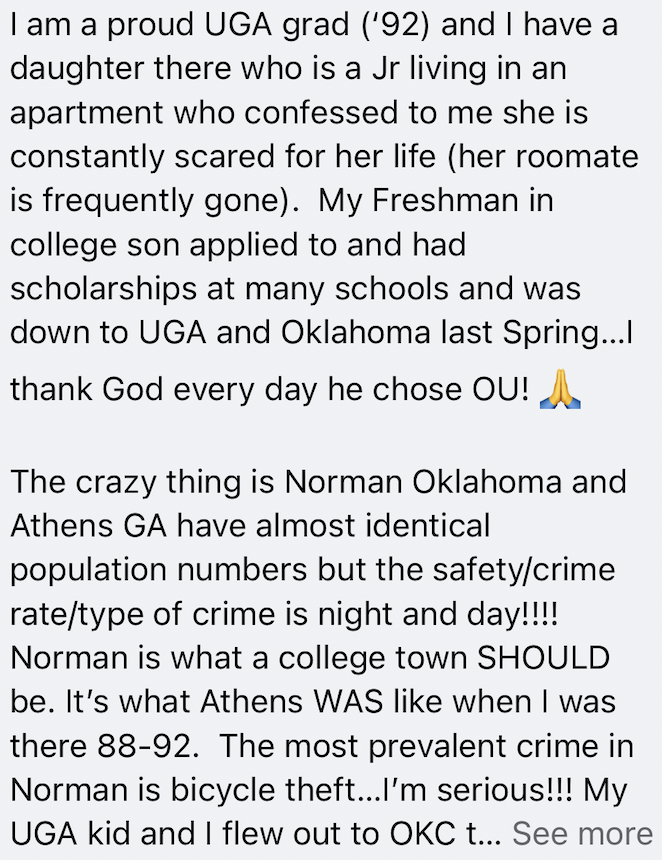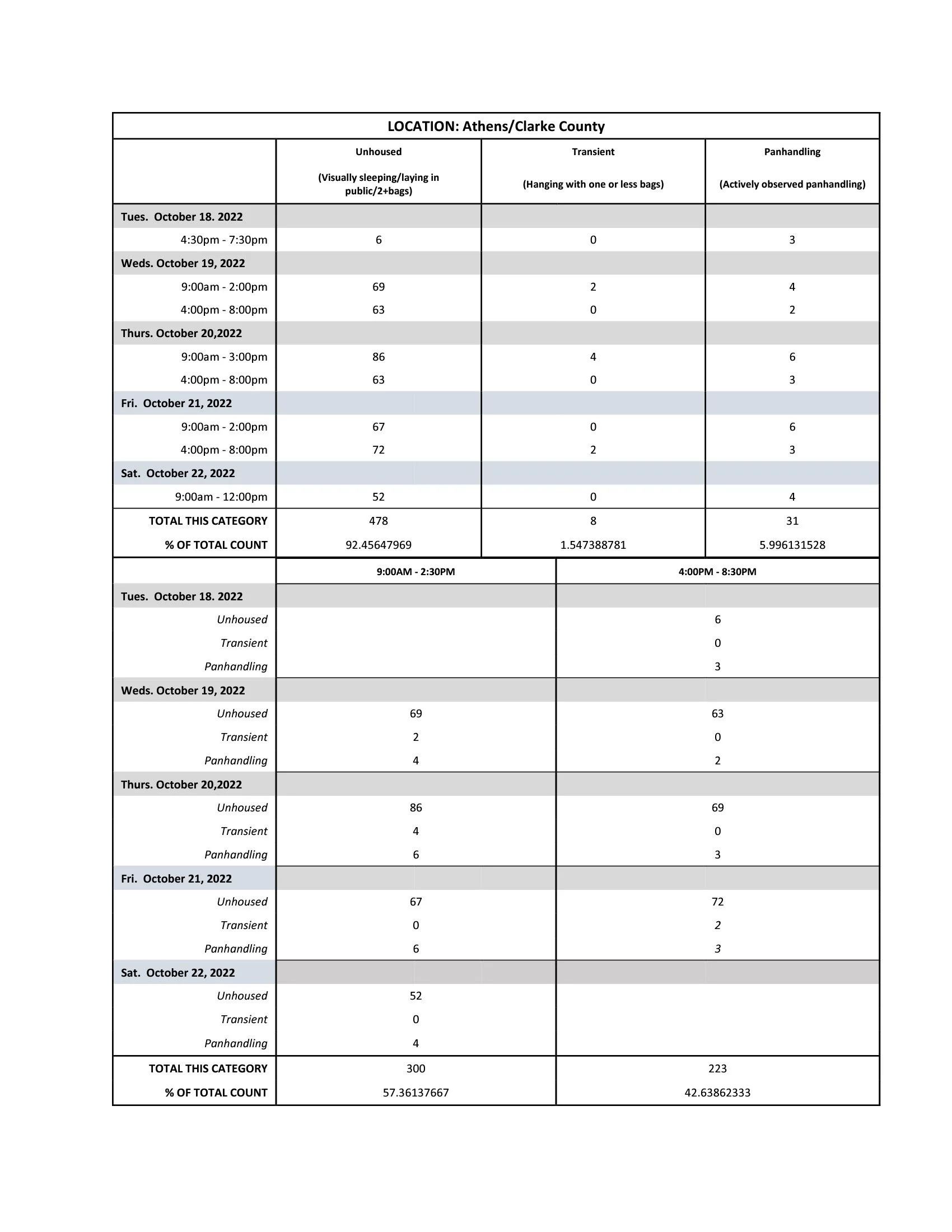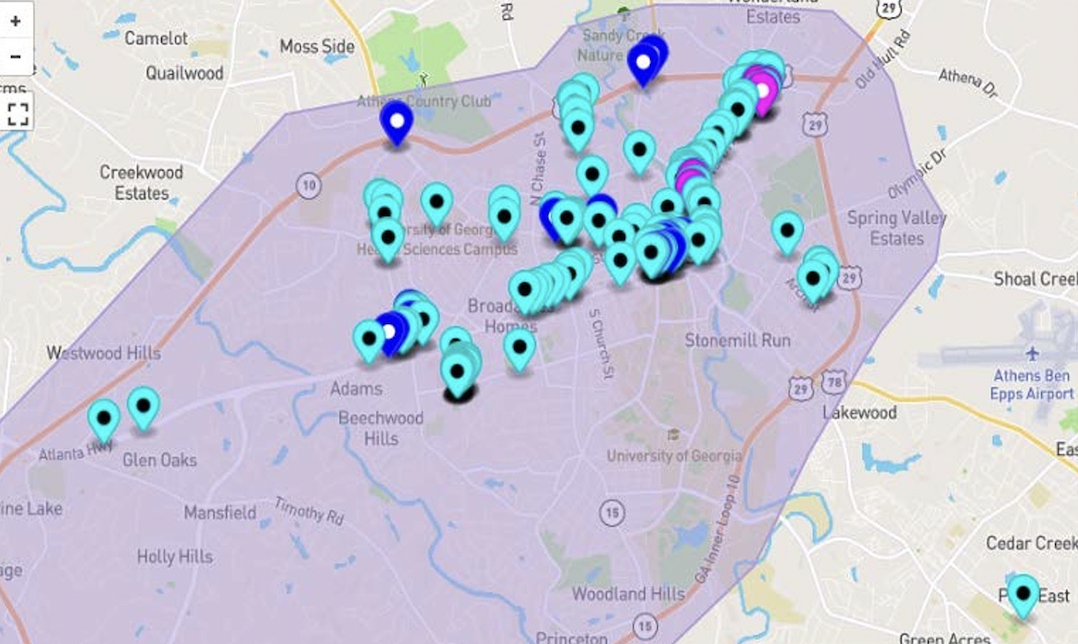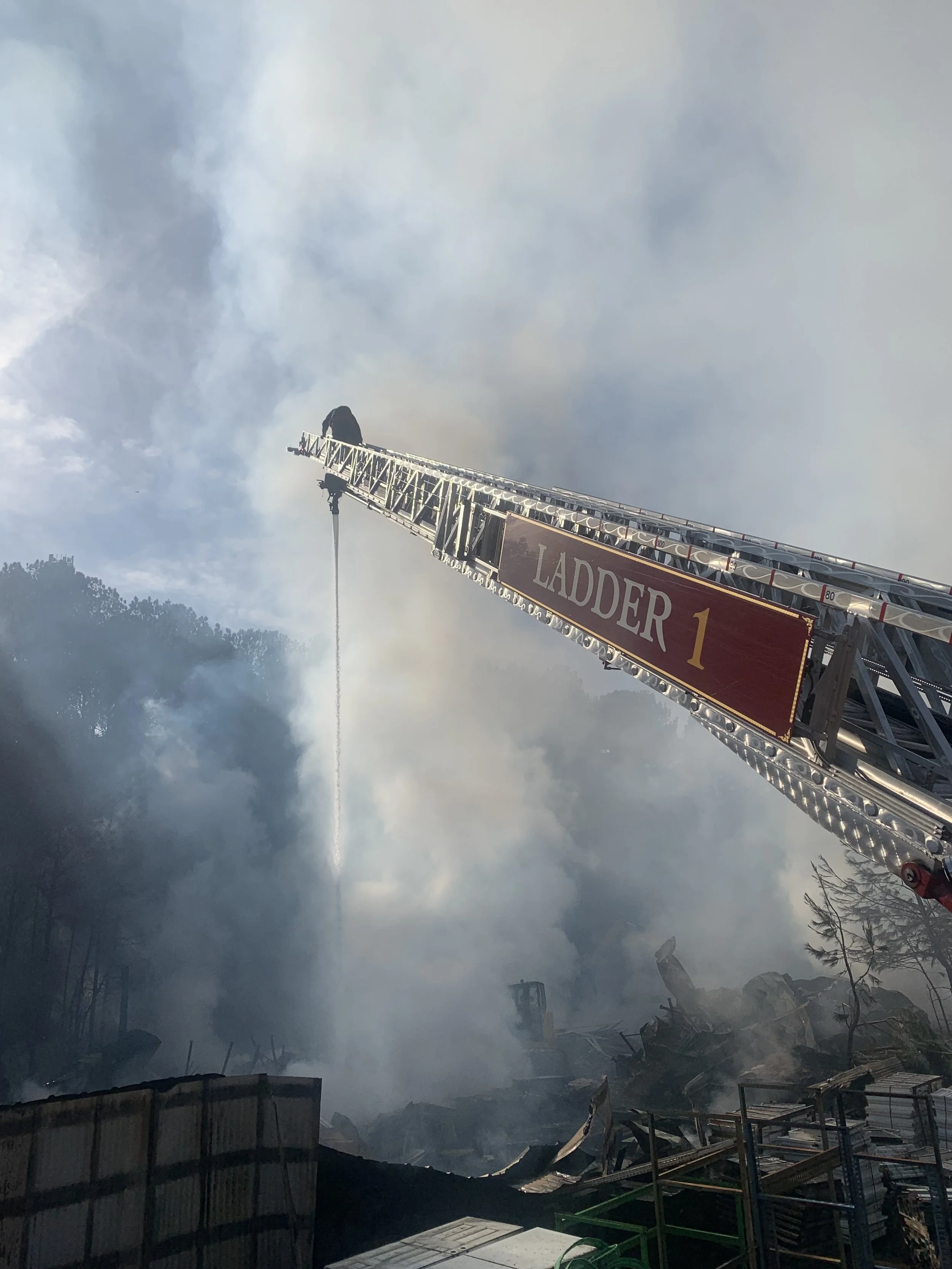A Win-Win for UGA, the Homeless, and Residents
Feb 14, 2023
Distinction should be made between two very different roots of “homelessness.” There are those struggling with behavioral health issues and/or substance abuse disorder and those without housing due to economic difficulties. It’s acknowledged that some people are living on the edges of financial stability and affordable housing options are at a premium for a multitude of reasons. Different circumstances require different solutions yet all levels of government tend to lump everyone together using federal “housing first” dollars, ignoring merciless mental health needs of chronic unsheltered homeless on the streets.
Background and Perspective.
Governments chose to ignore the distress of mentally ill and addicted people by closing state mental health hospitals decades ago. What was done in the name of progressive thought and compassion devastated the lives of thousands of people. It’s also destroying cities. The bottom line is that when states shut down their psychiatric hospitals, they never invested sufficient funds in community-based health care and important mental health services. What began as a progressive effort to “treat” people in the community became abandonment of the problem.
With that said, the federal government needs to change their “housing first” funding requirements to include more community-based congregate and non-congregate (with central gathering) housing focused on mental health services. And States need to step up creating efficient ways to help the chronic homeless obtain these living environments where they currently reside. Cities need to do their part by acknowledging and recognizing these needs instead of offering unrelated and expanded services that are mere “prayers and a sandwich under a bridge”.
What should cities like Athens Do to REDUCE Homelessness?
Data leads us to various analyses specifically from an Athens perspective and implementation would provide for a cleaner, safer, and more secure Athens and UGA campus.
First it’s important for the reader to fully understand what is “Housing First”
The Housing First model originated in New York City 20 years ago through the work of Sam Tsemberis of Pathways to Housing Inc in New York City. It has become the gold standard and dominates most government responses to homelessness with federal funding. There are two tenets (1) the most effective solution to homelessness is permanent housing; and (2) all housing for the homeless should be provided immediately, without any preconditions, such as sobriety requirements. The movement to “end homelessness,” across the country is centered on this policy. HUD funding is regulated in a way to make this approach the norm and during the Obama administration, mental health, addiction counseling, and employment training services were defunded to place emphasis on “housing first” funding. Unfortunately this one-size-fits-all policy ignores human nature and too frequently results in soul-crushingly low expectations that consign too many to a life of dependency. Here in Athens the situation is no different.
“Housing First” the panacea
One of the few long term studies conducted regarding outcomes of this Housing First approach was conducted through the Harvard Medical School and the Boston Health Care for the Homeless Program, published in 2021. This study involved tracking 73 chronically unsheltered homeless who were provided with permanent supportive housing (PSH) over a period of 14 years. Researchers found that the focus on housing rather than treatment and recovery saw impressive early results, but by year 5, only 36% remained sheltered, while at the study’s end, almost half of the cohort died due to a “tri-morbidity” combination of medical, psychiatric, and substance disorder.
One would think 20 years would be a significant amount of time to affect change. Yet, in cities like Los Angeles, Portland, Seattle, New York City, Houston, San Francisco, Austin, and yes even here in Athens, the unsheltered homeless population living on the streets has increased. If “housing first” was the magic bullet to end homelessness why are homeless tents set up en masse in these cities and elsewhere? To answer, one needs to assess the root causes of homelessness.
Will the unsheltered homeless person with mental health problems and/or substance abuse readily change their behavior to improve their life, while living alone in a subsidized apartment, with perhaps monthly or even weekly visits by a social worker? Data collected over 20 years says not for the long term.
Will a family who becomes evicted due to job loss, an illness or evicted by predatory purchases of low-income housing benefit from temporary affordable housing until financially stable again? Common sense tells us yes. Differentiation at this rudimentary level is needed.
To gain perspective, the state of California is host to roughly one-fourth of the nation’s homeless population and half of the nations total unsheltered population. While 25,000 Permanent Supportive Housing (PSH) units were added over a 10 year period - a 66% increase, the state’s unsheltered homeless population over the same period increased by 50%.
Homeless counts increased 67% in Sacramento County from 2019-2022 while Governor Newsom targeted $18.4 billion in taxpayer money in his first four years (2019-2022) for initiatives directly targeting homelessness; projected 2023 spending in California is $20.5 Billion. Philip Mangano, who served as national homelessness czar during the George W. Bush administration, commented “Yes, we are spending a lot of money and the problem is getting worse”. This illustrates the homeless industry created by ineffective “housing first” federal policy. Governor Newson is now reversing course and demanding county accountability toward reducing homelessness with a tough love approach.
Thus, to understand how to spend money available to “end homelessness” it is critical to define the population to be assisted and triage those in need to the right form of housing and services.
Right Steps Instead of First Steps for Athens
From this point on, we are discussing solutions for the chronically unsheltered homeless living on the streets typically observed by a community and generally thought of when one speaks of being “homeless.” It is the travails of this subgroup interfacing in public which draws attention creating issues of safety and security for everyone including these homeless individuals. Gangs prey on this subgroup, driven by drug use, making the streets unsafe. This motivates our group to find solutions for treating these homeless, thus creating a safer and cleaner environment for everyone. From our standpoint, this subpopulation has the greatest need for help.
Who are the unsheltered individuals living on the streets in Athens?
The most recent 2022 point-in-time (PIT) study from Atlanta suggests 37% of unsheltered homeless have mental health issues and 32% have substance abuse. Here in Athens, similar data show at least 50% or more on the street have mental health and/or a substance abuse disorder. Treatment is essential. In fact, from the Athens 2022 PIT data, around 58% of unsheltered homeless living on the streets have a severe mental issue and/or substance abuse problem and 55% of the emergency sheltered do as well. Sheltered counts include all emergency shelters, including homeless utilizing motel voucher programs. When looking at various categories (chronic, veterans, mental health issues, substance abuse, and domestic violence) sheltered versus unsheltered, the only category which pops up as significantly higher in the unsheltered count is substance abuse. 63% of the substance abuse homeless remain in unsheltered counts. It seems reasonable that addicts prefer to stay unsheltered, refusing to maintain sobriety typically required by most shelters.
Athens Continuance of Care 2022 Point-in-time count conducted, February 2022. Breakdown of homeless categories.
Is “First Step” the right step?
The ACC government sanctioned Barber Street homeless camp known as “First Step” was designed to be a “wet facility,” meaning no questions asked about drug use, criminal background or sexual predator listing. Again this is in line with the Housing First approach - get them in to the camp and then we will assess needs.
Observations and conversations indicate campers come and go all hours although gates (with security) are supposed to be locked at night disallowing entry/exit. Some campers leave only to come back days later or not at all. Of course, only lawful activity is accepted on site. The idea here is in line with the “housing first” philosophy - in this case entice them off the street by providing a meal, running water, laundry services, a place to shower, port-o-potties, free phone services, access to narcan, and then see if their issues can be addressed including mental illness and substance abuse. The concern here is that mental health services are not a priority nor required. It is up to the client to get to counseling or the pharmacy pick-up at Advantage Behavioral Health (ABH). ABH enrolls clients into ClientTrack (our HMIS) and checks in once per week at the camp. The reported data by ACC suggests on average, 15-20 campers come in and leave on a monthly basis. People who pack up and leave are not tracked to a final destination? How could they be tracked if they choose to leave or not enroll and participate in a particular program? All are certainly not going into Rapid Rehousing or other forms of housing such as a rehabilitation residence. In fact, reported camp data suggests that through November of 2022, 202 people camped with 5.76% going to rehabilitation or transitional housing and 12.57% going to a form of permanent housing. This corresponds to 11 and 25 people respectively. What is the average length of stay? This number is not provided. Some campers from out of town have been there months and others leave after a week. The number of campers fluctuates as reported by one camper this month - ‘a few months ago the number was high around 60 now down around 40 maybe.’
So this is the 1rst Step - the first step of housing first without appropriate and consistent needed mental health care and substance abuse treatment? Are there plans for a second step? What does that even mean? If the goal is to get these people into sustainable housing would you not want to track them from the streets to the camp to the apartment? Only then would you know if this step process was working. Our Homeless Management Information System (HMIS) data, required by HUD for funding, seems to have input gaps and tracking is heavily dependent upon provider inputs. Of these 25 individuals who are trackable, many were placed through Rapid Rehousing funding into low-income housing complexes riddled with gang activity and access to drugs. This is not the environment conducive to living a clean lifestyle. In fact, ABH reports that Rapid Rehousing, using federal and state dollars, has experienced a failure rate of around 30% within the first year. Note this number implies more failure than the study done in Boston after 14 years of tracking, showing a 64% failure rate after 5 years with increased morbidity.
One indicator of success of this first step approach might be to see 191 less chronic unsheltered homeless on the streets of Athens. Is this the case? Not according to our data. There is a continuous influx of this subgroup onto the streets. These circumstances are in line with data provided by a Manhattan Institute Study.
Our data show that roughly 50% of the unsheltered homeless on the streets of Athens have been in Athens less than 6 months with many less than one month and is in line with 2022 PIT data collection, suggesting when asked voluntarily and provided, 35% on the streets were from out of town.
Because we understand the clear nexus between chronic unsheltered street populations, gang activity, and drug use creating an unhealthy environment for students and the broader community, we contracted the Block by Block Director of Outreach Services to conduct a 5 day assessment of the homeless situation on the streets of Athens. These data were collected October 18-22, 2022, and are the most recent data available.
If there is any questioning of this nexus, just review the map showing reported shootings 2021-2022 inside and outside the 500 yard jurisdiction of UGA police around the main campus.
Red outline indicates the 500 yard shared jurisdiction between ACCPD and UGA police departments. The Black drop-pins indicate reported shootings inside this zone. Roughly 50% of reported shootings by ACCPD are gang related.
It’s important to mention data integrity when understanding the “who”. Consider the following:
The Athens Homeless Coalition 2023 annual PIT count was conducted in January however won’t be finalized until May of 2023 yet ARPA homeless funding decisions are currently being made. These data are under review and publicly unavailable at this time; perhaps used by city government but to date not provided to The Cloudburst Group (outside homeless consultant).
ACCgov contracted consultant Cloudburst to devise a strategic plan to combat homelessness in Athens. Cloudburst did not use the 2022 HMIS data that publicly exist. Further below you will see these data, noting that 887 unique ID entries were created in 2022 which is less than the roughly 1103 entries in 2021.
There is no mention thus far by Cloudburst regarding the point-of-origin of counted homeless. Why not? As mentioned, our data indicates the unsheltered street population remains high; around half are coming from out of town; an influx of nonresident homeless continues.
Our data - the most up-to-date counts available
In October, we contracted Block by Block Outreach to conduct point-in-time counts twice daily over 5 days, on the same route in the morning and afternoon. It took roughly 4 hours each time to cover the same route which was constructed to maximize exposure to unsheltered street homeless. The following data were obtained. The same person may have been encountered on multiple days thus the counts are only unique on individual days. However, our outreach person indicated seeing many new faces each day as counts were conducted. He also observed homeless everywhere throughout the areas he traveled. He noted homeless frequently use our free bus system to travel throughout the city with the library being a place of refuge from the elements. He encountered a suspected drug dealer in a camp on North Avenue near the Advantage Day Center and several psychotic individuals acting out from despair or otherwise scattered throughout the route. He was actually chased out of the woods near the corner of Willow and North Ave by someone having a psychotic episode (note this is adjacent to a large student housing complex). He noted that unsheltered homeless feel comfortable on the streets, leaving their belongings packed and unattended. Also that food was abundant for unsheltered homeless people either through cookouts, church groups, day centers, etc. In fact, one panhandler said it was too much food, he couldn’t eat all that was provided. He observed that homeless on the street felt comfortable and undisturbed by police.
In his discussions with business owners and UGA students, he learned people felt uncomfortable encountering the homeless on the street and there were interruptions of businesses. Students felt most fearful at night when walking the streets.
We have many anecdotal stories from UGA students encountering homeless people on and off campus. Incidents include: trying to open apartment doors, using dorm shower rooms, being followed, and finding homeless individuals sleeping in unlocked student housing. Multiple dead homeless bodies have been found in the river by students living nearby; aggressive panhandling of restaurant patrons is the norm. Business owners have contracted private security to disrupt loitering and to create a feeling of safety in and around their establishment. Having to clean human feces from the walls of patron bathrooms or watching someone relieve themselves in all ways on a public sidewalk, is not pleasant. Last year, UGA announced restricted hours to the main library to deter homeless incidents and sleeping inside at night. The Athens public library uses private security to deter homeless incidents; just this week someone locked themselves in the bathroom and would not come out. A local pastor in Athens moved his family off site from his church because of harassment and threats by homeless individuals on Prince Ave; church security is now becoming a national trend. We want to find solutions to help the unsheltered homeless which must include non-congregate housing (with shared gathering spaces) focused on mental health. The community as a whole deserves well being.
We have many many posts from parents on the Parents for Safety and Security Facebook page discussing student engagement with street homeless on and off campus. We have permission to anonymously share these snippets. While most interactions are benign, it only takes one bad haullicination while holding a machete to change someone’s life. The University of Texas at Austin found out after the fact when a homeless young man (dumped by an LEO from another county) sleeping under the stadium stalked, raped, and killed a young woman at night walking back from her class.
The Main Campus Library and Science Library are now closed to the general public early at 9pm.
Again, the question is after spending over $9 million since the onset of Covid-19 on homeless services, including a sanctioned encampment and eviction/prevention funding, why do we still continue to see the same relative number of unsheltered homeless on the streets? Below are the counts as reported in October of 2022. These are the most recent data available. Note, these counts are just of individuals traveling on Athens streets or camped in proximity of selected streets. Camps inaccessible or out of view deeper in wooded areas were not counted.
AM and PM counts conducted over a 5 day period. Homeless on the streets were categorized as unhoused, transient, or panhandling because we wanted to better understand if those coming into Athens were transient and en route to somewhere else. This did not seem to be the case, as most came to find housing, shelter, and general services. Outreach discovered that most unhoused homeless traveled light throughout Athens-Clarke County. These data are formatted through the use of BBB proprietary SMART System technology.
Full sets of counts were obtained W/Th/Fri both in the AM and PM. The highest numbers were counted on Thursday. The AM Saturday count was noticeably smaller probably because day centers are closed on Saturday. The numbers stayed fairly constant AM to PM with 57% of the encounters occurring in the Am and 43% of encounters occurring in the afternoon. The average numbers of unique unsheltered homeless on the streets Wed/Thur/Fri were 81 and 71, AM and PM respectively.
Block by Block uses real-time data collection to track homeless for outreach purposes.
Above you can see locations where counts were identified during the route. Pin-drops overlap with many points. Block by Block uses real-time technology to locate individuals and to report any incidents. They also can track custom lists of individuals receiving homeless services or otherwise and work closely with outreach service providers within the area, such as Advantage Behavioral Health Outreach. You can also see that the UGA main campus is located central to the majority of encounters, along Broad Street affecting a significant amount of off-campus housing.
The MOST important piece of information gathered during these engagements came from direct discussions with 40 unsheltered homeless (a representative subset of the population) identifying 20 homeless saying they had been in Athens less than 6 months with many saying around one month.
This correlates with new homeless faces observed on the streets of Athens on a continuous basis. The number of new faces seems to ebb and flow and makes one wonder if people come in small batches? And again the data suggests roughly 50% of the unsheltered homeless population the streets of Athens are from out of town. Remember, the 2022 PIT count reported roughly 35% or more are from out of town. Note that Advantage Behavioral Health reports that roughly 40% of their mental health clients served in Athens are from out of town. For reference, ABH as a contracted mental health community service board of the state of Georgia, is responsible for serving 10 counties, and has one of just a handful of crisis centers designed to service the entire state on a first come first serve basis. ABH outreach also manages the Georgia Housing Voucher Program for homeless rental housing and is responsible for 33 counties, actively managing 150-200 units in this capacity. Currently ABH manages approximately 64 Rapid Rehousing units. Available motel rooms used for housing projects are charging around $75 per night with availability of around 60 beds. Most of the GHVP and RR rentals to date (close to 75%) have been located in Athens, although the GHVP voucher can travel anywhere in Georgia with the client. Having so many placements in Athens puts pressure on an already tight affordable housing inventory and impacts underserved communities disproportionately.
For M/C to suggest that the unsheltered homeless population living on the streets of Athens are predominantly Athens residents, especially since Commissioner Houle sits on the ABH board, contradicts data and is an unacceptable stance in decision making. It is extremely important to understand that once a homeless person enters Athens-Clarke County and receives services they are considered an Athens resident. According to city government, this is standard practice and in line with HUD funding practices. This skews any data collected because now everyone within HMIS is essentially an Athens resident with no consideration given to place-of-origin except through possible private notation by a provider or outreach worker, and volunteer questioning during an annual PIT count.
We have many anecdotal stories of homeless being dropped off in Athens by other counties, including sheriff departments. Hospitals have dropped off in Athens, having no other possible option. If a client can answer 3 basic questions in absence of a mental health diagnosis - What is your name?, How many quarters in a dollar?, and Where are you? then medical transport must allow their client to depart as requested.
ACCPD has contacted other counties to discuss the matter only for them to deny any action. We have witnessed several people dropped off from medical transport on Prince Ave only to walk down the street with suitcases in hand. Unsheltered homeless walk along the Loop 10. Reports have been made of homeless arriving by bus. We have talked to three families who came to Athens after crossing into the United States illegally through Mexico to Texas, originally from France and Italy. Athens is not unique in this regard; Gainesville recently funded an effort to return chronic unsheltered homeless, living on their streets, to their respective homes. Gainesville is currently clearing unsanctioned homeless camps and it is very possible that some of these individuals end up in Athens at emergency shelters or on the streets.
The following graphs illustrate the upward trend of unsheltered homeless on the streets in Athens. The first graph shows the number of ACCPD service calls by month through August of 2022 involving a homeless person. Most of these calls are benign and involve trespassing. However too many involve opioid and fentanyl overdoses for which ACCFES (Fire and Rescue) is called. ACCPD estimates they spend 6 hours per day attending to homeless calls. I am told ACCFES has started a similar practice of tracking homeless calls.
Any call is estimated to be 45 minutes in length, involving one officer. In the recent Cloudburst report, under summary of feedback from organizations and stakeholders, it actually states that “Athens is a regional service hub, offering a variety of housing and supportive programs to those currently or at risk of experiencing homelessness.” Clearly this trend line says we are well on our way. Is this what ACC residents want?
This second graph shows the number of entry dates for unique ID numbers entered into Clientcheck by year. Again, the trend line is obvious. Unfortunately we can not differentiate the category of homeless, i.e. housed vs unhoused, receiving mental health services or not, type of housing resources offered, etc. We can only say that clients qualified for homeless service projects and their entry dates existed for that year.
Note that Cloudburst data only includes numbers through 2021. We have added 2022 entry data (“date created”). Most entries are by ABH and many are for mental health services only. Note these numbers include deceased individuals and those exiting the system. They do not represent the current active caseload in HMIS. Note also that two service providers, Bigger Vision and the “First Step” Camp, both said they have many from outside of Athens. No one is tracking those numbers. ABH is just starting to review point-of-origin.
Is ACCGov Putting Resources to the Right Solutions to Reduce Homelessness In Athens?
Athens received $57 million dollars directly from the U.S Treasury with American Rescue Program Act (ARPA) State and Local Fiscal Recovery Funds (SLFRF). This money has fewer strings attached for its use and M/C has allocated $5 million to be used for homeless projects with an additional $2.5 million HOME Grant available and administered by HUD.
The overall plan for use of the HOME Grant has to be submitted to HUD by the end of March or funding is lost. As mentioned, Cloudburst has been contracted by ACCGOV to recommend a strategic plan to combat homeless. Cloudburst interviewed a small sample of clients (20) at provider locations, distributed surveys, and reviewed HMIS through 2021. The newly published recommendation for use of the HOME Grant is to provide affordable rental housing for low-income homeless with $625,000 reserved for “services” and $581,309 going to a combination of nonprofit capacity and admin expenses. In their data they report 1,731 females and 1,532 males for a total of 3,263 people through year 2021 in HMIS. However, we used the same HMIS data given to Cloudburst to plot above and the total number of unique IDs entered into HMIS from 2010 to 2021 (after removing duplicate IDs for multiple service project #s) was found to be 3,575. We contend that this reporting is misleading relative to the actual number of actively engaged homeless individuals entered into HMIS. There are not over 3,000 active cases currently.
Based upon our data, knowing that roughly half of the unsheltered street homeless have mental illness and/or a substance abuse disorder, and that roughly half come from out of town, seeing new faces showing up daily, and knowing that many refuse shelter, low-income affordable rental housing for unsheltered homeless (housing first model) will not change the counts we have observed and thus we will continue to see street homeless with associated drug use drawing gang activity, creating an unsafe environment for everyone.
The unsuccessful approach of housing first to reduce overall community numbers of chronic street homeless is illustrated in the 2021 Manhattan Institute review referenced previously. While we do not dispute the need for affordable housing for the aforementioned homeless experiencing financial instability, we do not believe the housing first approach, without addressing mental health housing options, will be successful for the subpopulation of interest.
This brings the issue back to the state level with a critical need to decentralize mental health housing into communities throughout the state. Will this funding as outlined for housing for the $2.5 HOME Grant be selective toward those families suffering financial instability? The state already recognizes the need for financially unstable seniors, veterans, and developmentally disabled adults. An additional $11 million was set aside for ‘affordable housing’ separate from the $5 million to address homelessness. We recommend that the $5 Million to combat homelessness and the $2.5 million HOME Grant be applied to infrastructure costs of the SPLOST Project #28, providing non-congregate housing with continuous 24/7 mental health services on site at ABH, on Mitchel Bridge Road. As a community service board, ABH is already set-up to assume operational responsibility and can sustain servicing indefinitely without relying on future grants. No more city funding is required for operation and $581,309 (or 23%) for nonprofit capacity and admin costs would not be necessary; more funding would be used toward needed infrastructure (60 beds worth). This would sooner rather than later provide the needed mental health component to the unsheltered street homeless subpopulation. If future funds are required through grant applications to complete this project then it could be delayed years coupled with the tiering of SPLOST projects. Once street homeless have an option for needed treatment there will be no excuse for them to remain on the street. Refusing treatment in order to remain on the street would not be an option. Also, preference to point-of-origin being Athens-Clarke-County is important. We must take care of our residents first but doing so may require state legislation.
Why we advocate for Block by Block Ambassador Programming (BBB)
This brings us to what we have been advocating for - a robust BBB ambassador program to enhance safety and security for everyone. UGA can take more responsibility for keeping their students safe and at the same time help provide valuable outreach to the street populations using real-time data. There is no liability on UGA, as the insured vendor takes full responsibility under contract.
We have advocated for using the Block by Block Ambassador program as a “nontraditional” means to support homeless services for over a year. This program provides multiple benefits for students, residents, business owners, and homeless outreach workers thus indirectly shelter providers. While this program offers benefits for many stakeholder groups, for our purposes here, we will focus only on the outreach to homeless component.
Specialized outreach ambassadors are trained for homeless outreach and many have social work backgrounds. They can patrol in flexible ways, both in terms of hours of the day and location, to interact with unsheltered homeless on the street. The Director of Homeless Outreach for BBB is a social work professional with 20 years in the field connecting homeless services to individuals in need. BBB uses outreach workers to engage with the street homeless because research shows the more engagement the more likely the person will accept help or move on. Not only are these specialized ambassadors eyes and ears on the ground providing a better sense of security for residents, preempting potential illegal activity and vandalism, their outreach capability would complement an overtaxed ABH outreach team. And, their real-time data collection is provided in a variety of formats, to include information on a known individual in a “top list” approach, by incidents in real-time, and in reportable formats for government agencies. Under the direction of ABH outreach, cooperative outreach would greatly enhance efforts to account for chronic homeless on the street, help them obtain services, track and hold them accountable for follow through of services. Their deployment is the “first step” to getting mental health needs met for chronic homeless individuals, while at the same time providing the public greater peace of mind, and quite frankly better overall “community” mental health. No student wants to wake up, walk outside their apartment, and find a two week old dead homeless person decomposing on the river bank next to their building. Just imagine.
Recently an effort to recognize the need evolved from the Athens Downtown District Authority (ADDA) in the form of an ‘ambassador pilot program.’ This pilot only included a couple of people placed downtown to offer hospitality to patrons. Unfortunately, this effort does not address the crucial outreach component that a BBB program can offer, nor does it offer the real-time data collection, expertise, and flexibility of zoning BBB ambassadors. It also does not address liability issues assumed by the city or the university. UGA Parents for Safety and Security publicly answered this effort with a petition respectfully asking for the needed BBB approach. This petition has been signed by 1,200 parents. Our request, asking to discuss fell on deaf ears. This is disconcerting, leaving us to think there really is no interest on the part of the city to actively engage to solve problems affecting the common community in a mutually beneficial manner.
Again, we understand the homeless/gang/drug nexus and want to find the right solutions which predominately involve use of non-congregate (common gathering and cooking) community mental health housing to reduce unsheltered chronic homeless on the streets of Athens. We support the funding of the SPLOST 2020 Project #28 at Advantage Behavioral Health as the “right step” to achieve this vital housing option. We support all forms of non-congregate community mental health housing to reduce street homelessness while emphasizing the need to serve long term Athens residents first and contend any funding should immediately make this happen. Waiting for SPLOST dollars (budgeted amount only half of what is needed) over years or potential grant funding in the future is unacceptable. Providing a tent or a low-income apartment with self-isolation and limited mental health programming under a HUD regulated “housing first’ option will not solve the problem and we will continue to feel the affects of the homeless/gang/drug nexus. It is not fair to the homeless person, student, or to the community at large. The University of Georgia can do their part while city government and the state of Georgia can recognize this need and fully participate offering assistance as capable. The state of Georgia can recognize the need to further decentralize mental health, homeless outreach, and housing options/services across the state as well as tailor conservatorship law and mental health holds so the severe mentally ill can finally get the help (including housing) they desperately need and of course doing so while protecting individual rights. All can learn from Governor Newsom acknowledging the failure of the “housing first” model and follow his lead making counties legally liable for providing services for people whose survival is at risk because of untreated mental illness while at the same time putting individuals on notice that they are responsible for accepting that help.
We must also inform that the ACCFES has been saddled with homeless calls. In winter months especially, but summer too, it is easy to spot homeless camps in wooded areas just by looking for smoke plumes. In fact, fires are the #1 reason ACCFES is called to assist with the homeless; #2 reason is overdose, followed by generalized health issues such as diabetes. In fact, the number of homeless calls are so significant we understand that ACCFES is now starting to track this number for reporting and resource allocation needs similar to ACCPD.
Two fires within a week of each at the same location most likely caused by homeless campfires. These fires burned for several days and stressed the capacity of ACCFES. We currently have 3 ladder trucks, the third is used sparingly and old. These infrastructure needs have been known for quite some time. Considerable cost was incurred by the city.
If these fires get out of hand they can cause real damage and jeopardize community safety. There have been 3 fires of late which drew significant resources. One was last year located behind the At Home store on Atlanta Highway caused by burning tires behind the building. Two other fires occurred within a week of each other at the same location behind the lumber yard on Tallassee Road. It is believed by most involved that these fires were caused by homeless camping in the woods adjacent to the buildings. Camping continues to this day in the woods behind this property which is near the railroad tracks. Fires like these put our fire fighters in significant jeopardy, with use of ladder trucks, potential chemical fires, and consume the extremely stressed and limited resources of the ACCFES.
March 11, 2023 UPDATE: The plan for the $2.5 Million HOME-ARP Grant was approved (8 to 1) by the Mayor and Commission during the March 7, 2023 Regular Session and did NOT include any funding towards the non-congregate housing to be located at Advantage Behavioral Health. Roughly $1.3 million is allocated for 5-10 units of “affordable housing”, over $500,000 for undefined “services” and over $600,000 (or 25% of the total) for “capacity building and administrative purposes".” Access the plan here.
